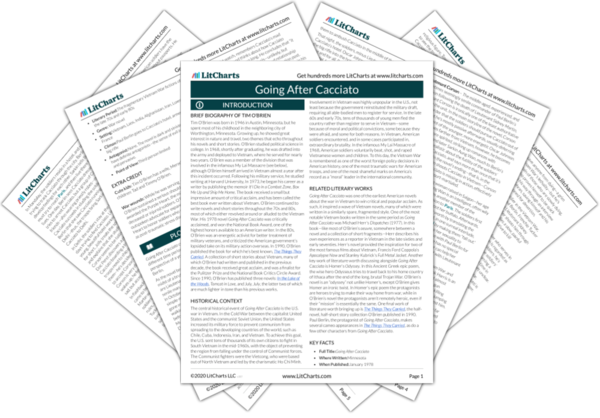AI ToolsNew
Tools to make learning and teaching easier
|
Previous
Chapter 5
|
Going After Cacciato: Chapter 6 Summary & Analysis |
Next
Chapter 7
|


Upgrade to unlock the analysis and theme tracking for all of Going After CacciatoGoing After Cacciato!
Get LitCharts A+